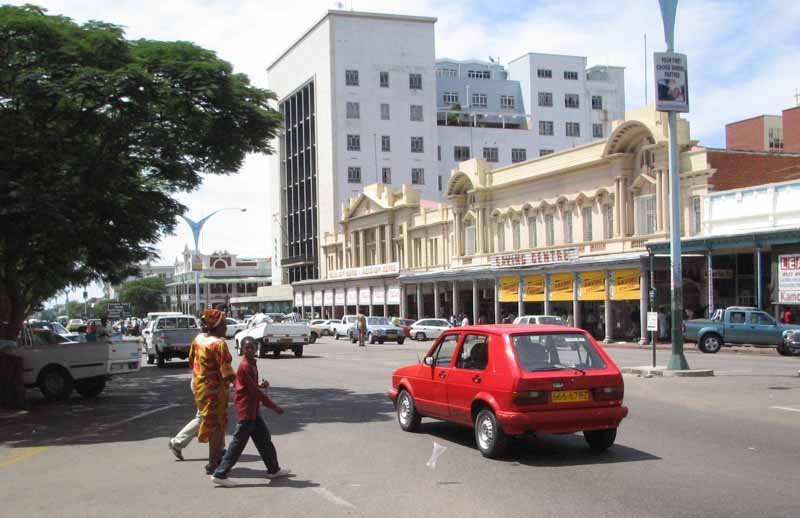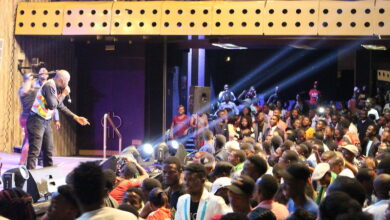Amazing Facts You Probably Didn’t Know About Bulawayo

Zimbabwe’s second largest city with a population of over 650,000 as of 2012 is Bulawayo. With a rich history spanning over 175 years, the city can be classified into three distinct periods: Lobengula’s Bulawayo (1840 – 1893), Rhodesia’s Bulawayo (1894 – 1979) and Zimbabwe’s Bulawayo (1980 – date).
Check out these amazing Facts you probably didn’t know about Bulawayo below
1. City Status
Image Credit: Kai Hansen
Bulawayo was first declared a town on June 1, 1894, one year after what is now known as the Matebele War. It was then given municipality status on 27 October 1897 and had 6 Councillors at the time. It would take the town a full 50 years to be accorded a city on 4 November 1943.
2. Design of streets
Image Credit: Kai Hansen
The design on the streets of Bulawayo are rather peculiar and this was for one fundamental reason: oxen carts turning. The city had wide streets that were broad enough to allow a span of oxen to turn without difficulty, a provision which greatly assists the city’s traffic even in current times.
3. First Car On Rhodesian Soil
Image credit: Salisbury, Rhodesia (Facebook Page)
In 1902, Charles Duly who had a cycle agency in Bulawayo (most will remember the car dealer Duly’s) imported a French 6½ horsepower ‘Gladiator‘, the first car to arrive on Rhodesian soil, into Bulawayo.
Doubtless many Rhodesians had seen motor cars in their travels elsewhere, but the arrival of the Gladiator caused something of a stir in Bulawayo. There is no record of Mr. Duly having to copy the English practice of having a man walking in front of his machine with a red flag, but the wonder and apprehension which the motor car caused are nevertheless quite clear. Assigned to report on the wonderful machine, a Bulawayo journalist recorded in obvious awe that the chain-driven, single cylinder contraption was powered by a spirit called petrol. It was steered, he added, by a wheel which enabled the driver to change direction at any speed.
4. Haddon and Sly
Image Credit: Kai Hansen
In 1894, W. H. Haddon and J. W. Sly founded one of the very first firm’s to grace the face of Bulawayo: Haddon and Sly. In its early days they provided a tea room and ladies rest room as a facility for the country customers who found the slow journey into Bulawayo by ox-wagon or cape cart fatiguing. It was once a departmental store but in more recent years has been turned into a glorified flea-market with all 3
0floors have small traders in stalls.
5. Standard Bank under a tent
Image Credit: Standard Bank.com
The first bank to be opened by the Standard Bank of South Africa (now known as Stanbic in Zimbabwe) was under a bell tent on 4 May 1894. This was done at the time that 400 gold seekers had flocked Bulawayo and been awarded licenses to prospect for gold, a total of 11,000 claims being registered. By September of that year they moved into their own premises, a single story building with a verandah and hitching posts in front.
6. First Newspaper
Image Credit: MemoriesOfRhodesia.com
Bulawayo’s first newspaper was the Chronicle which was launched as a twice weekly newspaper in Oct 1894 and by the following year it had its first advertisements which covered most of the professions and services in the area. By May 8, 1895 The Chronicle moved to a daily newspaper, of which it is still today.
7. Railway Line
Image Credit: Geoffs-trains.com
As part of Cecil John Rhodes mission to link ‘Cape to Cairo’ the building of a railway line from Mafeking in South Africa to Bulawayo was pivotal for his initiative. Arriving in November 1897, making Bulawayo the keypoint in the railway system which was to develop in South-Central Africa as far as Congo, its favourable geographical position led to its development as a major commercial and industrial centre. This led to a clearing house for the whole of Central Africa being established in Bulawayo. Bulawayo once boasted of having the longest railway platform in the world.











